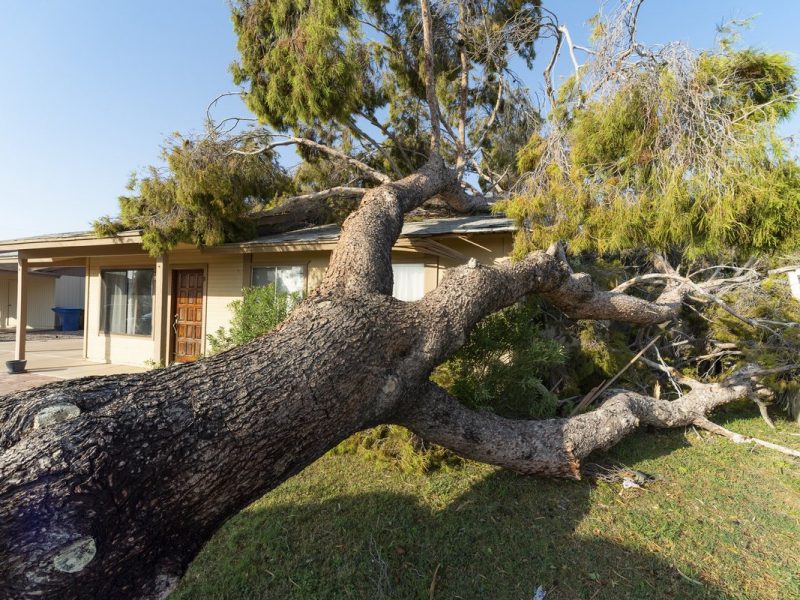
Storm damage to trees and plants is very common in the valley. Especially during the monsoon season. After a moderate to severe storm limbs, branches, and even whole trees can break and fall over. Design Tree’s first priority is responding to our clients emergency tree situations.
We provide emergency services including removing trees, limbs, and branches from houses & personal property. We also clear roads and remove debris from driveways. Pruning or removal of trees that could lead to personal injury or additional property damage are also services we provide with the highest priority. Our team of professionals are highly experienced at assisting in insurance claim matters. We are ready to help with any questions or concerns that you may have about your claim, coverages, or claim strategy.
Design Tree’s position as a valley wide company with substantial resources provides us with the unique ability to mobilize crews and equipment from unaffected regions to address the emergency needs of clients in storm damaged areas as quickly as possible.
Our highly trained, certified tree experts are able to operate in high risk situations, utilizing large cranes and other equipment that may be necessary to eliminate the immediate problem.
Once emergency services are complete, crews begin the process of clean up and repair on storm-damaged plants.
Treatment recommendations on storm damaged plants will depend on the type and extent of damage, plant health, species considerations, and potential for a re-occurrence of failure. Where pruning is recommended to restructure the crown (a process known as crown restoration) the plant will often require a series of pruning appointments over a period of years to restore it to a desirable form and strong structure.
Mature trees that are leaning following storms indicate significant root damage. These situations should be evaluated as soon as possible by a professional to avoid property damage and personal injury. Small plants may be successfully straightened and guided to their correct growing pattern. Re-staking and cabling may be a necessary countermeasure taken to correct the placement and foundation of trees in these cases. Once that is set there is usually a need to build up a new compost well around the base and provide supplements and nutrients to strengthen the growth of the root system. Each situation is unique in its own right and all plants that are leaning require thorough evaluation to determine whether removal or treatment is required.
Even if your trees do not exhibit obvious significant damage, it is important to have them inspected by a certified arborist who may detect symptoms and conditions that could lead to future problems.



Experts in Complete tree care for over 25 years
Customized Tree Solutions
Fast Emergency Response
Over 750 5 Reviews